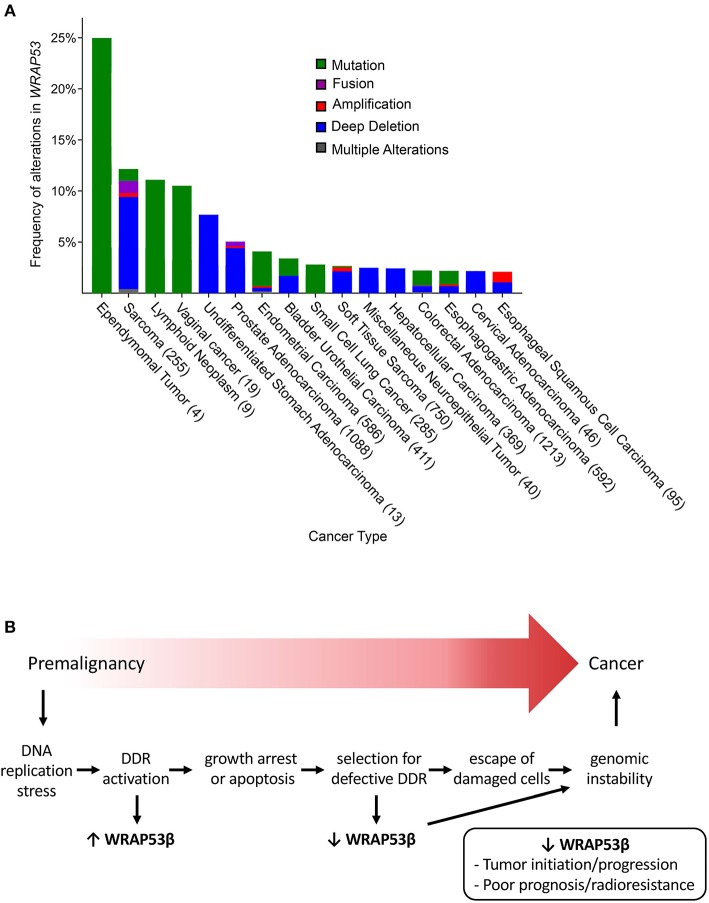Figure 2.
(A) The frequency of genetic alterations in WRAP53 associated with various cancer types (minimum threshold of 2%) (From cBioPortal, accessed April 17, 2019). The numbers in parenthesis represent the number of patients analyzed. (B) Proposed model for the involvement of WRAP53β and the DNA damage response in the development of cancer. Aberrant cell proliferation may cause replication stress, formation of DNA double-strand breaks and activation of the DNA damage response. Overexpression of WRAP53β as part of the response stimulates repair, growth arrest and/or apoptosis, but some damaged cells may escape (e.g., due to downregulation of WRAP53β), leading to genomic instability and potential progression into cancer.

